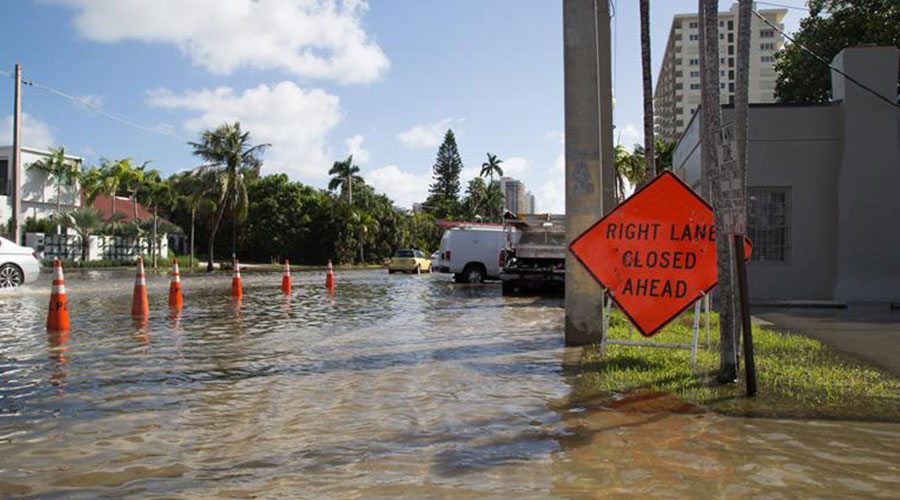Communicating When There is No Time to Lose
A new emphasis on communication during emergencies has led to fresh thinking about mass notification systems
The killings at Virginia Tech brought a difficult question into stark focus. In a life-threatening situation, how much do people need to know? Having good information has always been essential to emergency response plans. From sirens, strobes and exit signs to fire drills that teach building occupants how to respond if an evacuation is needed, methods for providing critical information have become so important that codes spell out how they must be used.
Today, the expanding capacity for digital information-sharing makes it possible to transfer information rapidly, even instantaneously, to building occupants. And new choices in mass notification systems offer options that go well beyond strobe and siren setups.
Taken together, those factors raise new questions about the kinds of mass notification systems appropriate for different kinds of buildings. In a break from past thinking, there is a growing sense that occupants should be kept well-informed about events as they unfold.
“Anywhere people congregate is a suitable location for installation of mass notification systems,” says Samuel Shanes, chairman and CEO of Talk-a-Phone Co.
Challenges
Simply put, mass notification systems must work. When they don’t, the results can be dire. Selecting a system to cover as many scenarios as conceivable should be the first priority.
Boiled down to its essence, it means two things for facility executives: First, however the messages are deployed, they have to be timely and intelligible. Second, the systems need to be robust enough to work even during catastrophic events.
“Reaching all occupants in all areas with the appropriate message is the biggest challenge,” says Jayson Kneen, communications manager for Notifier.
Mass notifications systems of the past may not meet the needs of today’s approach to emergency planning, which recognizes that different situations call for different responses. John Haynes, director of product line marketing from SimplexGrinnell, points to a K-12 school where an unclaimed briefcase was left outside. The school, equipped with a fire alarm system, didn’t quite know how to notify students and teachers of the suspicious package. The fire alarm system didn’t allow specific instructions to be communicated. If it had been used, students and teachers would simply have evacuated the building, and some of them would have wound up passing the briefcase.
“Their only training was to leave the building,” says Haynes.
Technology Options
Industry experts say that a uniform consensus over how to define mass notification hasn’t been reached yet. National Fire Protection Association (NFPA) standards on which code might be based are still in development, and rapidly changing Internet Protocol (IP) communications are paving the way for new technologies.
Even though there’s no firm definition of what mass notification means, says John Weaver, director of marketing for Gamewell/FCI, there are three general areas of development for products intended to serve that purpose.
Those three areas, according to Weaver, are Web-based telecommunications; public address systems that grew out of the military’s “Giant Voice” program; and life-safety system circuitry based on NFPA standards.
The equipment used to communicate messages for these systems varies. Ethernet, wireless and cellular technologies, along with dedicated cabling systems and fiber optics, are among the options on the market.
From there, systems expand to offer myriad solutions: Strobe and siren systems and call boxes are still available, but today there are also smoke and heat sensors that trip mass notification warnings, email dialers, Short Messaging System (SMS) dialers, LCD display screens, and many more. For facility executives who choose email, cell phone, or SMS dialers to spread messages, remember that the device receiving the message must be turned on for the person controlling the device to answer or respond to the message.
What works best for any given organization is dependent upon the systems already in place. With IP networks, organizations can often piggyback mass notification systems on existing IP networks, which can reduce costs, says Shanes.
“Audio requires so little bandwidth, you can jump right onto an existing network,” says Shanes. Voice over IP technology can be used via a simple graphical user interface on a Web browser, for example.
The widespread use of IP also makes it attractive for very large organizations.
“IP technology is a good choice for multinational and national operations,” says Kneen. “Users can page from a computer over IP and distribute to a wide audience.”
Stand-alone options, such as an NFPA-based system, also work well because the system is engineered to overcome network node failures, much like wireless mesh networks. But most experts agree that multiple systems guarantee the highest probability for effective communication.
Uses and Applications
Whenever the subject of mass notification comes up, people tend to think back to deadly events in recent history. But the truth is that notification systems can be used for more pedestrian matters. In January 2007, a strange odor — a gas-like smell — settled over parts of Manhattan. It had residents spooked; buildings were evacuated and some train service temporarily ground to a halt.
The city’s air sensors didn’t detect unusually high concentrations of gas, and tests conducted by authorities revealed nothing dangerous in Gotham’s air. So life in Manhattan went on.
“The management of the building I work in made an announcement over the paging system,” says Seth Klibonoff, senior engineer for the Syska Hennessy Group, Inc. “They let us know about the smell, told us that it wasn’t dangerous.”
Building management also announced to occupants that they were temporarily shutting down the building’s air intakes, Klibonoff says.
Sheri Gilchrist, director of marketing for Captivate Networks, says LCD screen displays were used in one lower Manhattan building during the days and weeks after the Sept. 11 attacks.
“Building management used the screens to let tenants know which streets in lower Manhattan were blocked off,” she says.
Remember that the application and use of a mass notification system might also change course as events unfold. For example, even when organizations have no employees or tenants with disabilities, some situations can result in disabling injuries to building occupants. When thinking about a fire, explosion, shooting, or other situation, facility executives need to remember the “walking wounded,” and take them into account when deploying messages.
Making Systems Robust
When jetliners crashed into the World Trade Center, the in-building communication systems in both towers failed immediately. But it doesn’t take terrorist strikes to knock out mass notification systems. An earthquake, a fire or human error can disable a system at a critical moment.
Like a suit of armor, every mass notification system has weak points. The key, say industry experts, is to choose the system that best fits the needs of the organization.
Tom Giannini, director of security marketing for SimplexGrinnell, says facility executives should avail themselves of a variety of technologies. Giannini cautions against choosing a single type of communication system.
“Layer systems so that they overlap, and augment them with an intelligent voice evacuation system,” says Giannini. “Relying on a single type of technology will not cover your every need. Protect the system against loss of power or other unseen problems, and choose wiring that’s not susceptible to single-point failure.”
Tom Brubaker, vice president of Prepared Response, Inc., agrees. “Systems must be used in conjunction with other technologies.”
Layering systems need not be a complex matter. For example, many newer mass notification systems have methods to display building plans or schematics to first responders. But — even if only as a back up — it’s a simple matter to have schematics saved onto a USB flash drive that’s always carried by the building manager. When emergency personnel show up, they can use a laptop or tablet computer to view building plans.
“Just remember to save the plans in some accessible file type,” says Klibinoff. “Most firemen won’t have AutoCad 2007 loaded on their computers. Use a JPEG or PDF format.”
Effectively positioning speakers or other equipment is also essential to the utility of the system.
“Always find the best place in a building to broadcast from,” says Jim Harris, CEO of Office Media Network.
The Human Element
For all the technological considerations involved, the ultimate effectiveness of mass notification systems comes down to people. Any mass notification system is only as good as the humans who will operate it during an emergency; all the technology in the world won’t help if the human element fails at a critical moment. So proper training is crucial.
Getting building occupants to act upon the broadcast messages is another challenge. Because mass notification devices are traditionally used in fire alarm systems, occupants can be confused about how to react if there is no voice annunciation to give clear messages. Occupants must be educated to respond appropriately to messages from the mass notification system.
Finally, having the right human resources available is crucial to the process of evaluating needs and selecting a mass notification system. Facility executives should plan system choices with outside consultants. Consultants can aid in addressing a variety of contingencies and help organizations comply with current codes. Consultants can also work with facility executives in the selection process, to help ensure that the mass notification system will work as planned when needed.
Needs Assessment: Questions to Ask
Most experts recommend some kind of needs assessment. In short, facility executives should try to examine every angle and conceive of every possible emergency their organizations might face. To help gather all the information needed, questions facility executives should ask questions like these:
- Who are affected populations?
- What do they need to know?
- How do you get them to behave with the desired response?
- Where are the populations located? (Schools might have populations both in classrooms and outside on the playground. Similarly, office buildings might have outside populations in a plaza, for example.)
- How do you relate to each population you need to reach?
- How do you transmit information in the appropriate period of time?
- Who’s going to be charged with putting out those messages?
- Does the building have a large number of visitors on a daily basis who might not be familiar with the system, locations of exits, or dedicated mustering areas?
- How many people with disabilities are in the building? What are their disabilities?
- What scenarios would require complete evacuation of the building?
- What scenarios would require “rescue in place” instructions?
- Does the system you choose have addressable components for messaging flexibility?
- Do you need or want live streaming video of a situation?
- What happens to the system if you lose power?
- What are the consequences of system failure?
- Upon failure, what are back-up methods of notification?
- Do the hours of operation for your facility affect your needs?
- If a system requires voice instructions to be given to a chosen population, who gives those instructions? In a university campus, is it the president of the university? Is it the police?
- While many systems use pre-recorded audio files to broadcast news in the event of an emergency, how important is the ability to “go live” for customized instructions?
|
Loren Snyder, a contributing editor for Building Operating Management, is a writer who specializes in facility issues. He was formerly managing editor of the magazine.
Related Topics:











